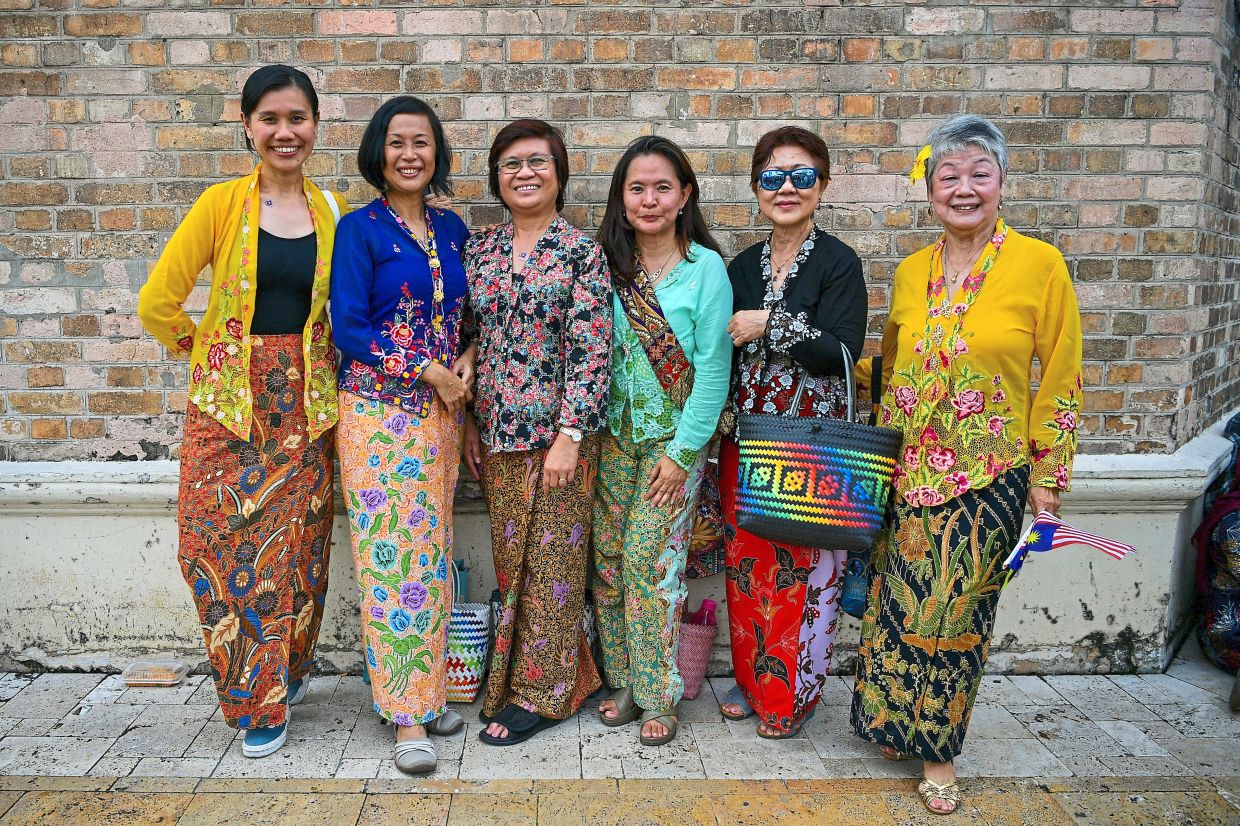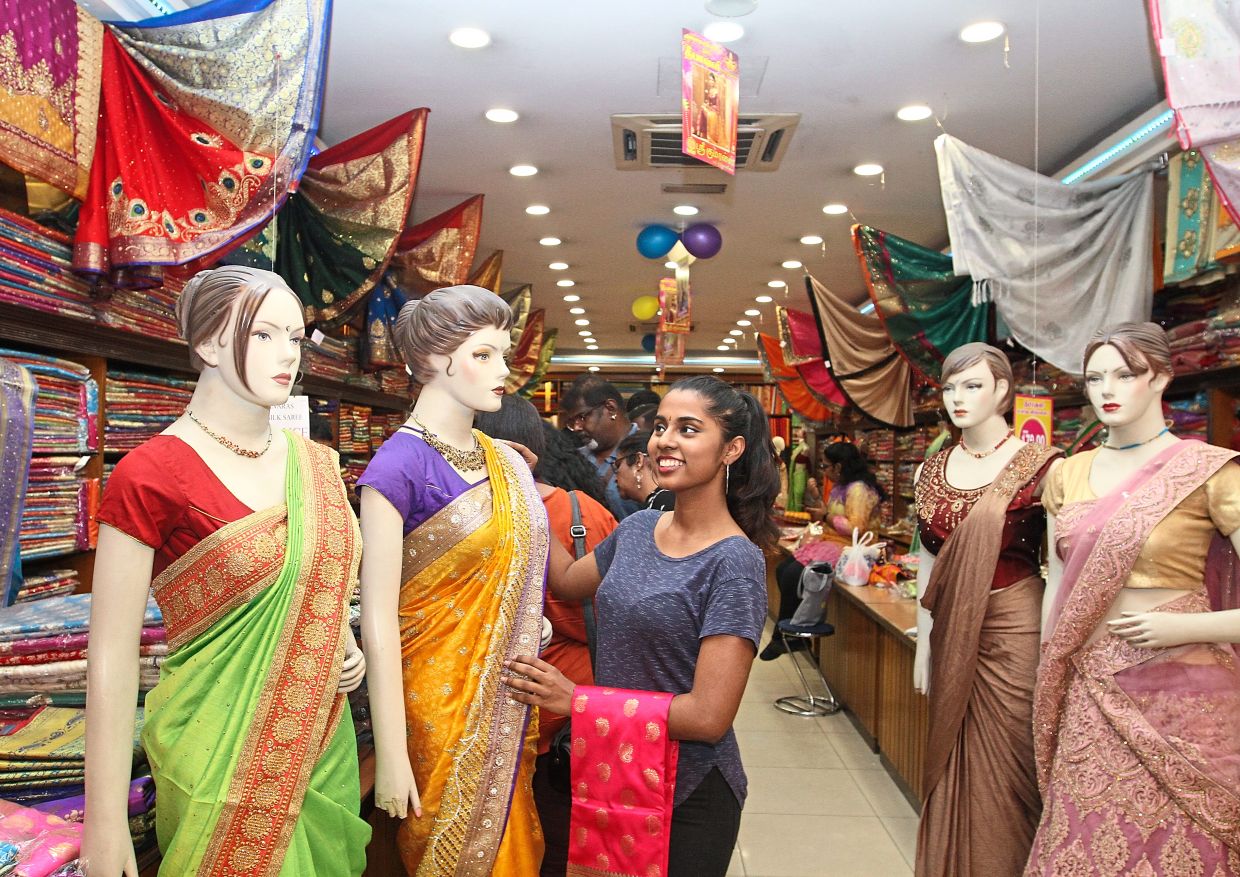THE numbers were beyond the expectations of the organisers when more than 10,000 people of various races and ages showed up to participate in the Keretapi Sarong 2023 (KS2023) recently.
While most wore the sarong and the kain pelikat to the event, many also turned up in their traditional attire to add colour to KS2023 to celebrate the love for Malaysia and its diversity.
This year’s theme, Ethnicity and Unity, was accompanied with a strong fashion show, a flash mob and joget lambak, replete with the 1960s and 1970s music filling the air, revealed news reports.
I wish I was there. It must have been the party of the year. I’ve promised myself that I’ll be there next year with my buddies.
One news report that touched me was a Bernama story accompanied by a video of a Peranakan couple, John Roland Goh, 71, and Lai Joo Lian, 70, who were up by 6am to get ready and be part of the programme.
They were dressed in traditional Baba Nyonya attire, a short kebaya and sarong, as well as a Malaysian batik shirt.
For Lai, KS2023 was nostalgic because it allowed her to recall her teenage years and provide the opportunity to see the different types and patterns of clothing worn by today’s younger people.

Nostalgic event: Lai (second from right) with her friends in Nyonya kebaya and sarong at the recent Keretapi Sarong 2023. The 70-year-old was up by 6am to get ready to be part of the programme. — Bernama
What I liked most about this event is that Malaysians voluntarily turned up all decked in their best. That’s the best part of spontaneity – it’s real and raw.
It was a reminder that Malaysia is safe.
Without politicians spewing toxic race and religion narratives, Malaysians are well clued-in on how to respect each other.
Whether it’s the joget lambak or ronggeng, most Muslims love and appreciate these cultural facets without being frowned upon.
It’s common knowledge that wayang kulit (shadow play) and menora (a Siamese theatre dance) have been banned by the PAS state governments.
The traditional dance, kuda kepang, was once banned but is slowly returning with some tweaks to parts that apparently infringed on religious sensitivities previously.
The songkok, for example, is just a Malay headdress and has no religious connotations. A baju Melayu is just incomplete without the songkok.
Why should anyone make a fuss if it’s compulsory to wear a songkok to an istana event?
I’m proud that the brass band of my alma mater, St Xavier’s Institution, had a velvet songkok as part of its uniform.
I happily and proudly wear a songkok with my baju Melayu during Hari Raya open houses.
And I can’t ever recall the Indian saree becoming an issue until recent years. Suddenly, sarees are deemed inappropriate and offensive by certain groups or institutions because it traditionally exposes midriffs and backs.
It’s a classic case of ignorance because this elegant dress was never designed to attract unwanted attention – it’s just the way it is and has always been. How has it suddenly become a crime now?
Last week, a school in Kajang found itself in the news when it allegedly barred its students from wearing the saree during the National Day celebrations.
This isn’t the first nor will it be the last time unless the Education and Higher Education Ministries put a stop to this nonsense by issuing a circular saying the saree is acceptable – not just for schools but at university levels, too.
Make it clear and leave no room for doubts or discretions. Engage Indian cultural and religious leaders on this dressing issue if clarity is needed.

The elegant saree was never designed to attract unwanted attention and can be worn in varying degrees of modesty. — The Star
Teachers and lecturers should stick to what they are hired for – teach – and not make judgment calls on what is moral according to their individual standards and prejudices.
Anyone who has been caught in these situations before would know it’s usually a lone voice who imposes his or her stand on others.
It suddenly becomes a decree that no one dares challenge this person if he or she has some religious authority, but there may be no credence to this at all.
Each time an incident like this crops up, the authorities step in and put out the fire quietly.
By now, it’s well-known that most rape cases in Malaysia happen in rural areas, where the victims are conservatively dressed. The predators are largely familiar to the victims and have even included relatives.
According to a report in the New Straits Times on March 16, Kelantan has one of the most sexual crime cases in the country.
Bukit Aman Criminal Investigation Department director Datuk Seri Abd Jalil Hassan said most of the sexual crimes reported in Kelantan in the past few years were rapes.
“Eighty per cent of the sexual crimes reported in Kelantan involved children,” he said after launching Kelantan police’s Child Interview Centre (CIC) in Kota Baru.
Asked about the higher number of sex crimes involving children compared with adults in Kelantan, Jalil said he believed the lack of attention by parents to their children was a contributing factor.It has nothing to do with the dressing of flight stewardesses or nurses, which seems to be the obsession of some lawmakers.
Certainly, wearing shorts and skirts above the knees isn’t the cause of sex crimes.
So, the last thing we need in our schools and universities are self-appointed custodians of morality banning sarees, which is simply disrespecting the traditional culture of fellow Malaysians.
The actions of such teachers don’t only deprive students of their right to represent their cultural identity, but also runs contrary to the inclusive values espoused in the “Malaysia Madani” concept advocated by the unity government.
If we don’t stop this, the Iban warrior may no longer be seen wearing his shorts at National Day or Tourism Malaysia events.
So, kudos to the organisers of KS2023 for bringing tradition and fun to all Malaysians.
KS2023 director Shamsul Bahrin Zainuzzaman hailed the programme as having successfully achieved its main objective – to see Malaysians in ethnic attire travelling on public transport while promoting the multicultural sarong.
“I am wearing the traditional attire of the Bidayuh ethnic group as a sign of support, and we also saw many other friends from various races taking part in KS2023,” he told Bernama.
The Keretapi Sarong was introduced by non-governmental organisation Random Alphabet in 2012 before being taken over by LOCCO in 2017, involving thousands of participants travelling on public transport wearing either batik or pelikat sarongs as the de rigueur attire.
Anyone ready to organise a saree event soon? There’s certainly a dire need for education.





